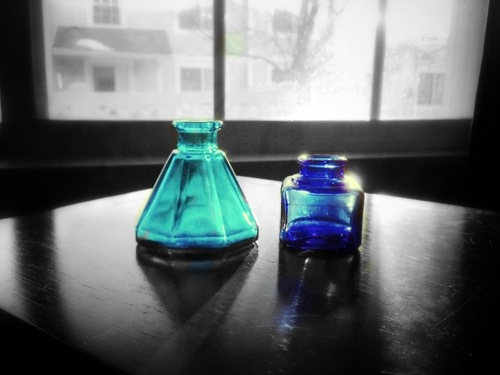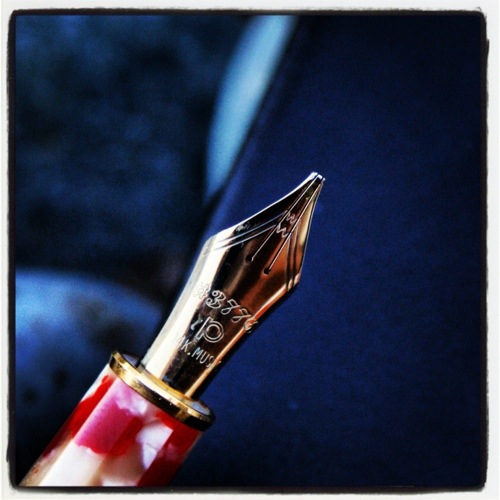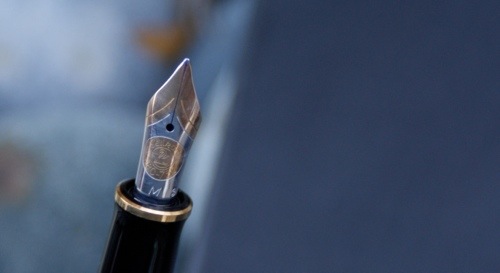For quite a while now, many of you have known that I’m good friends with James Partridge, owner of The Pear Tree Pen Company…but here’s something that’s probably new to you! I’m delighted to announce that effective immediately, I’ve assumed day to day management of operations for The Pear Tree Pen Company! Yep…you read that right. The Pear Tree has been re-planted in the middle of Corn Country!
The Pear Tree Pen Company is pleased to announce that Ryan Roossinck has assumed management of the day-to-day operations of the successful online retailer. Roossinck is known among fountain pen and ink enthusiasts for his popular internet blog, Brassing Adds Character, where he reviews writing instruments and accessories such as pens, pads, and inks. He is also known for his role as a moderator on the Fountain Pen Network, the largest online community of fountain pen and ink lovers on the internet.
Pen collector James Partridge founded the Pear Tree Pen Company in 2006 as a part-time home-based business. Following the introduction of the Fountain Pen Ink Sampler later that year, business began to boom leading the fledgling operation to seek larger quarters. Pear Tree Pens moved, literally, from the kitchen table to the basement, and shortly thereafter opened a larger retail and order-processing facility just north of downtown Ann Arbor. Despite the tough economic times, the Pear Tree Pen Company continued to prosper, and even hired several staff members to help ship packages to thousands of customers around the world.
Unfortunately, splitting his time between his full-time career as a corporate attorney and managing the burgeoning online establishment began to take its toll on Partridge. “I realized that it’s impossible for me to do it all. I can’t excel in my legal career, grow the Pear Tree Pen Company, and spend as much time with my family as they deserve.” Partridge began to explore selling the business, and even considered simply shutting its doors.
Partridge soon had a few offers on the table, but ultimately found the best option lay closer at hand – in Roossinck, a friend and fellow pen collector. “One of his best attributes may well be his talent for ‘reading the minds’ of our customers.” Partridge said. “Several times already, Ryan has helped me choose new products that soon became extraordinarily popular. He possesses tremendous knowledge and expertise, and his enthusiasm for the pens, inks and papers we offer is second to none. Add to that his dedication to outstanding customer service and it became clear to me that Ryan would be an asset to the Pear Tree Pen Company – and the pen community.”
“James and I hit it off right away,” Ryan said. “One of the things I really enjoy most about James is his creativity, and his ability to trendspot. We’ve had a lot of great conversations over the past several years that will undoubtedly lead to some really cool new products that we think that our customers will love.”
The future for The Pear Tree Pen Company looks very bright, and includes a lot of great new products and ideas that customers are sure to love, and both Ryan and James are really excited for what comes next! “We’ve got some cool things up our sleeves,” says Ryan, “stuff you won’t be able to find anywhere else! The addition of Lum-Tec’s fantastic line of watches is just the start!”
In anticipation of the future, both James and Ryan have their shades ready. Get yours out.
So…what happens now? Well, for me…lots of things. I’m still intending to run Brassing Adds Character as a semi-separate entity, and I’ll still be covering lots of the same topics that you’ve seen from me before; features on vintage pens that you may not have seen before, hacks & how-to’s, and the occasional review of a pen that strikes my fancy. You might see a few more product announcements here and there, but my intent is to keep Brassing operational as a non-commercial site. If/when I do another roundup/best-in-class feature, etc., you’ll still find links out to eBay and other sites that sell the pens & products that I review. If it’s something that we sell in our store, or it’s something that you can’t get anywhere else…you’ll find links for that stuff, too.
I would ask that in the interim, while I get used to “minding the store”, that you’d be patient with us. Our dedication to a great customer experience remains the same, but let’s face it…there’s a bit of a learning curve that I’m going to deal with, and I’d appreciate your cooperation! Along those same lines, I’d also ask that we keep Brassing conversations focused around Brassing topics, and go back-channel for Pear Tree stuff. Thanks!
Now if you’ll excuse me…I’ve got ink samples to make! 🙂












